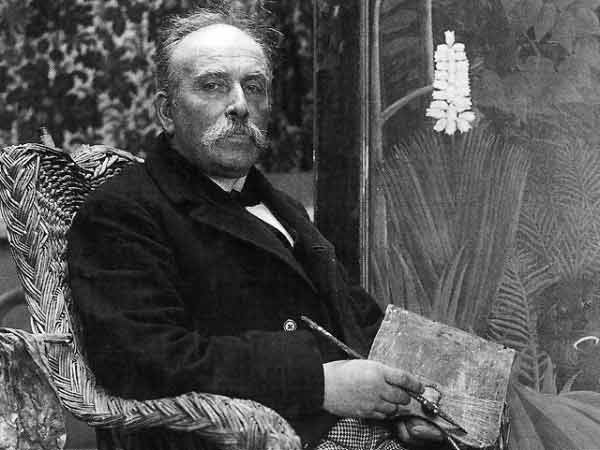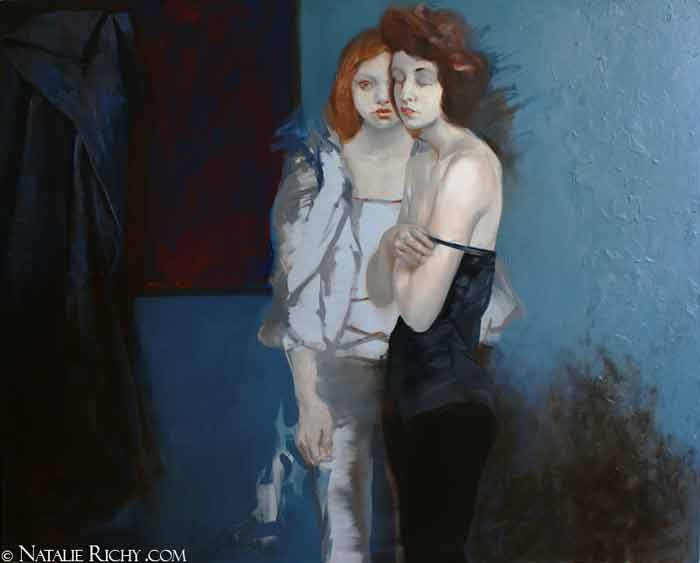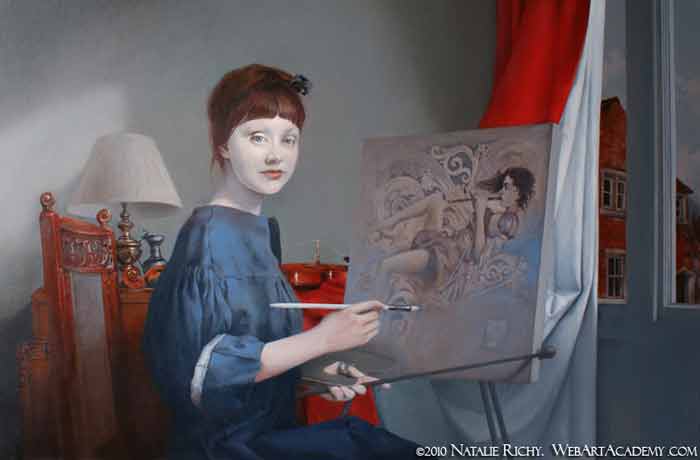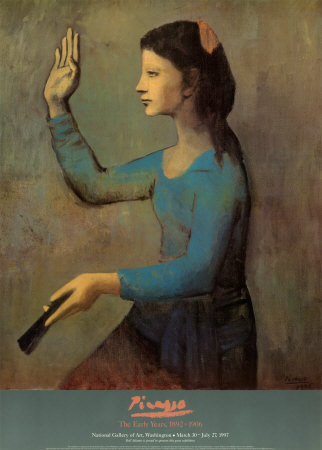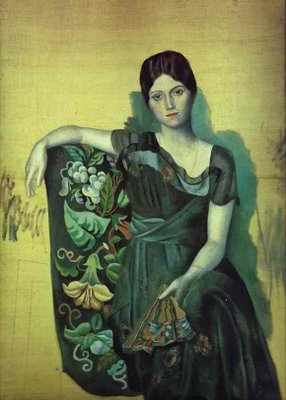On 17 Aug, 2011 With
The Famous Fine Artist and his Muse Emma Zorn. Emma Zorn (née Lamm, 1860-1942) came from a well-to-do middle class Stockholm family. Her father, Martin Lamm, was a wholesale textile merchant and her mother, Henriette, had the maiden name of Meyerson. They had three children Herman, Anna and Emma. The family, which was of Jewish descent, had very pronounced cultural interests and conducted an intense social life. There were many artists in their circle of friends and it was also through such an acquaintance that Emma met Anders Zorn who was of the same age. She happened to be babysitting for her nephew Nils when he was to be painted by Zorn in the winter of 1881. It turned out to…
Read More
On 11 Aug, 2011 With
A French Naive or Primitive painter. Henri Rousseau was also known as Le Douanier (the customs officer), a humorous description of his occupation as a tax collector. Ridiculed during his life, he came to be recognized as a self-taught genius whose works are of high artistic quality. Henri Rousseau was born in Laval, France into the family of a tinsmith. He attended Laval High School as a day student and then as a boarder. He was mediocre in some subjects at the high school but won prizes for drawing and music. He worked for a lawyer and studied law, but “attempted a small perjury and sought refuge in the army,” serving for four years, starting in 1863. With his father’s death, Rousseau moved to Paris in…
Read More
On 4 Aug, 2011 With
This Video shows the creation of the figurative painting. The canvas is toned with a thin layer of oil imprimatura, and the two figure drawing is done in sanguine. The oil painting approach is one of simplification of form and colour. In contrast to the clarity with which Natalie describes faces, details of the dress and drapery are done in loose brushstrokes and are stylised impressionistically. The composition of the painting is located in fictive surroundings. The elegant blue colours in the painting suggest nostalgia, which ads imaginative and aesthetic significance. Natalie brought to this figurative picture a modern sensibility, impressionistic effects and painterly fluency.
Read More
On 3 Aug, 2011 With
The Video Lesson “How to Paint a Portrait in Oil” demonstrates the oil painting technique in the style of an 18th century Paris salon, explained in specific, sequential steps. From the positioning of the figure to the details of the background, this easy-to-follow process will give you the discipline and focus that the difficult art of portraiture demands. Oil painting is the process of painting with pigments that are bound with a medium of drying oil — especially in early modern Europe, linseed oil. Often an oil such as linseed was boiled with a resin such as pine resin or even frankincense; these were called ‘varnishes’ and were prized for their body and gloss. Other oils occasionally used include poppyseed oil, walnut oil, and safflower oil. These oils confer various…
Read More
On 24 Jul, 2011 With
In this video lesson you will discover how to create very effective artworks with minimal means. Good quality paper is essential for this kind of artwork. Ideally, paper should be strong enough to take a sharp graphite pencil and it should also be eraser resistant. You can search your art supplies shop for paper that is suitable for drawing, in the required size. Don’t be tempted to replace drawing paper with watercolour or sketching paper, even if you like the surface texture. Watercolour paper is not as resistant to a rubber eraser as smooth drawing paper is. We have chosen a 42x 59 cm sheet of paper for a reason. A portrait of the character with a face measuring 9…
Read More
On 11 Jan, 2011 With
In 1943 Picasso (age 62) then kept company with young art student Françoise Gilot (born in 1921). Their two children were Claude (1947) and Paloma (1949) who was named for the dove of peace that Picasso painted in support of the peace movement post World War II. Gilot, frustrated with Picasso’s relationships with other woman and his abusive nature left him in 1953. Gilot’s book “Life with Picasso” was published 11 years after their separation. In 1970 she married American physician-researcher Jonas Salk (who later died in 1995).
Read More
On 23 Dec, 2010 With
The Women of Pablo Picasso: (1953-1973) Dejected and alone, in 1953 Picasso met Jacqueline Roque (1926 -1986) at the Madoura Pottery where Picasso created his ceramics. In 1961 (when Picasso was 79) she became his second wife. Picasso created more works of art based on Jacqueline than any of his other loves, in one year painting over 70 portraits of her. When Picasso died on April 8, 1973, Jacqueline, who had been with Picasso for 20 years, prevented Picasso’s children Claude and Paloma from attending his funeral. Jacqueline died from shooting herself in 1986.
Read More
On 15 Dec, 2010 With
Fernande Olivier and Picasso (1904-1912) Artist model Fernande Olivier (1881-1966) was Picasso’s first long term relation and subject of many of Picasso’s Rose Period paintings (1905-07). Picasso met her after settling in Paris in 1904. Although Fernande was married, she stayed with Picasso for 7 years. Fernande modeled for other artists between 1900 and 1905 after which she moved in with “the Spanish artist”, Picasso, who then prevented her from modeling for others. Fernande’s having published selections from the memoirs of her life with Picasso infuriated the artist but eventually, at age 70, Picasso paid the ailing and bedridden Fernande a small pension. The full memoir was not published until 1988, “Loving Picasso”. In early 2004 the National Gallery in Washington, D.C. had an exhibition of…
Read More
On 14 Dec, 2010 With
Olga Khokhlova and Picasso (1917-1927) In 1917 ballerina Olga Khokhlova (1891-1955) met Picasso while the artist was designing the ballet “Parade” in Rome, to be performed by the Ballet Russe. They married in the Russian Orthodox church in Paris in 1918 and lived a life of conflict. She was of high society and enjoyed formal events while Picasso was more bohemian in his interests and pursuits. Their son Paulo (Paul) was born in 1921 (and died in 1975), influencing Picasso’s imagery to turn to mother and child themes. Paul’s three children are Pablito (1949-1973), Marina (born in 1951), and Bernard (1959). Some of the Picassos in this Saper Galleries exhibition are from Marina and Bernard’s personal Picasso collection.
Read More
On 3 Dec, 2010 With
Rousseau and Picasso. Whilst the public often ridiculed Rousseau’s work and organisers of the official Salon exhibitions rejected his submissions, he was admired by a younger generation of avant-garde artists, many of whom also lived and worked in Montparnasse at various points in their careers. This group of artists included Picasso, who bought several of Rousseau’s paintings and held a legendary banquet, ‘Le Banquet Rousseau’, in his honour. Many of these younger artists were fascinated by so-called ‘primitive’ art, discovering a powerful form of expression in African tribal masks and other non-Western artefacts. For them, Rousseau was a homegrown curiosity, a ‘modern primitive’ whose paintings captured something of the vitality they admired in these other art forms. Picasso purchased Rousseau’s…
Read More


